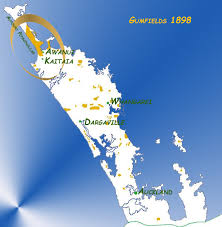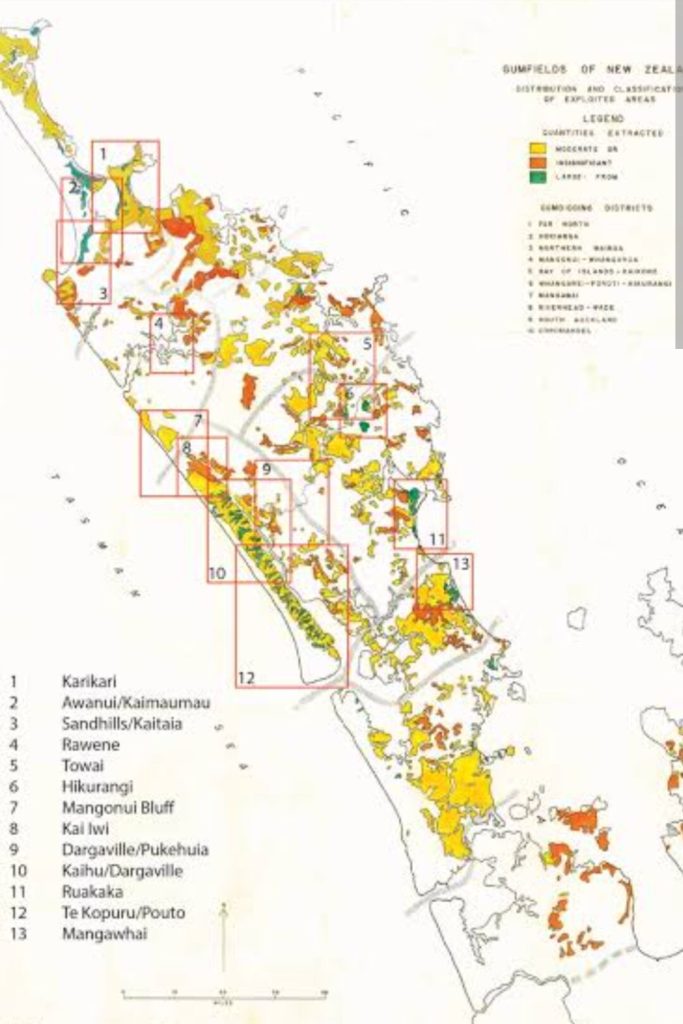Nature’s Golden Tears
Kauri gum begins as sticky resin oozing from a wound in the tree’s bark. Over decades, it hardens; over centuries, it fossilises. Buried in swamp peat, it can last for tens of thousands of years, forming nuggets from marble size to giant boulders.
Māori & Early Use
Māori collected gum from the forest floor and swamps, using it for fire-lighting, as a torch fuel, and to seal waka seams. Some was chewed like resin gum.
The Gum-Digging Era
In the late 1800s, a kauri gum rush swept the north. Māori, European settlers, and many Dalmatian immigrants worked the swamps with long spears and shovels, digging for nuggets that might be fresh or 30,000 years old. Gum was New Zealand’s fourth-largest export, shipped worldwide to make varnish, linoleum, and fine finishes.
Grades & Beauty
Kauri gum ranges from pale white to golden honey to deep red. The clearest pieces rival amber in beauty, sometimes containing ancient moss or insects. The largest recorded lump weighed over 110 kg.
Today’s Rarity
The gum-digging days are long gone. Modern finds usually come from land development or swamp kauri recovery. Once an industrial commodity, kauri gum is now a rare collector’s treasure — each piece a fragment of an ancient forest’s heartbeat.


